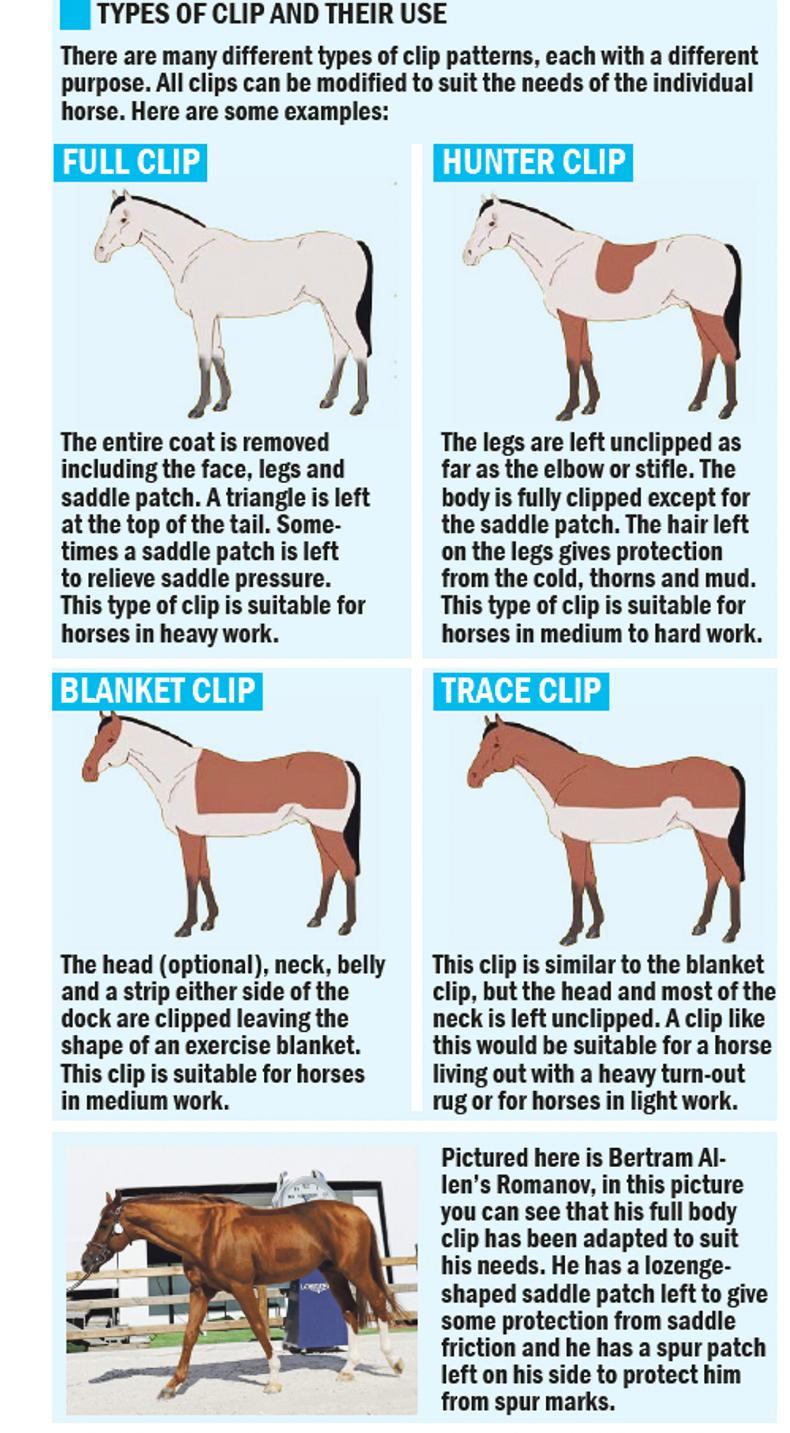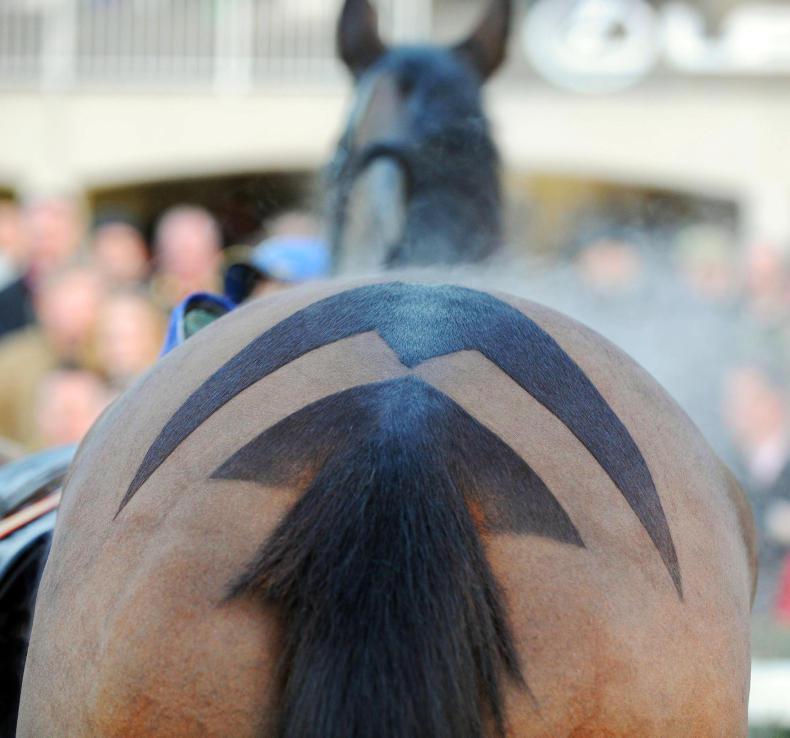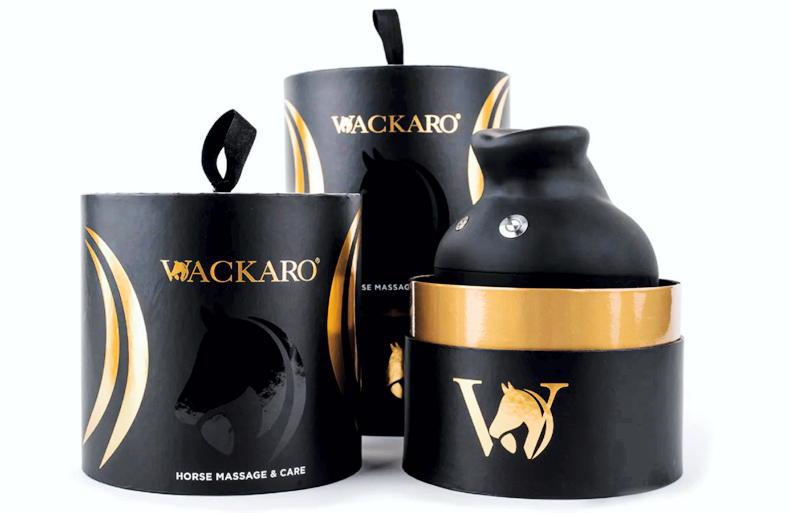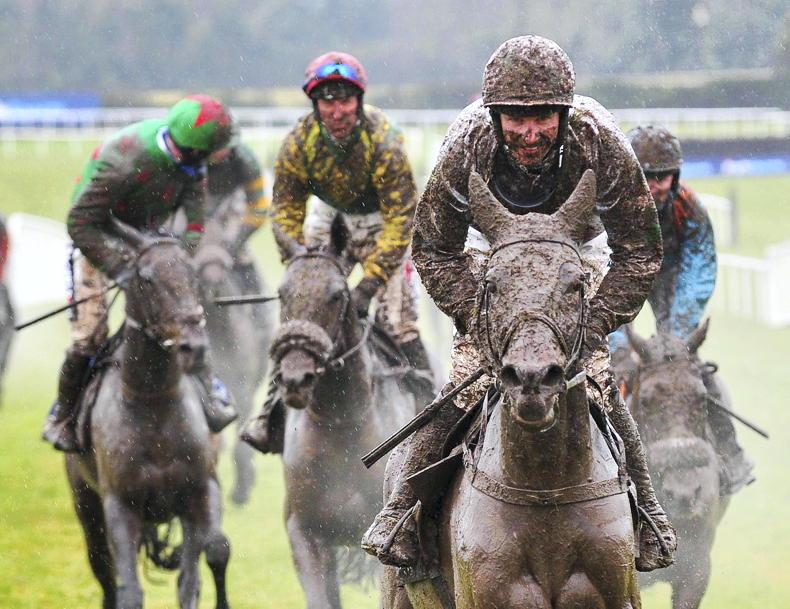IT’S clipping time again. Preparation is the key to making clipping as stress-free as possible. Start to think about it before you actually want to clip, this will give you time to get everything you need in order. Ideally, blades should be cleaned and sharpened after your last clip.
You also need to check that your clipping machine is working and that everything is as it should be. Make sure to clean out the vents and check the electrical cord is safe and fit for purpose.You are likely to need an extension lead, unless you are clipping with cordless clippers, check the lead is working before you begin too.
The first thing to remember is that not all horses can be clipped without assistance from a veterinary surgeon, so if you feel a situation is developing where you, the handler, or the horse are no longer safe, then stop immediately. It’s not worth someone getting hurt.
Read the situation
Never tie your horse up directly to a wall or door. If a horse decides to pull back, they can easily injure the handler, you, or themselves. To avoid this, use baler-twine to tie to your horse. Attach the twine to wherever you would like the horse and using a quick release knot, attach the lead-rope to the twine. This means if the horse does pull back the twine will break.
Every horse is an individual, and each time you clip them you will find out more about them. Some horses are happier being held rather than being tied up. Be prepared for a certain amount of trial and error when clipping.
Safety
No matter how well-behaved you think your horse is, you can’t be sure that nothing will go wrong. Have someone as experienced as possible to help you. You need whoever is holding the horse to read the situation, this allows you to focus on clipping and they can monitor how the horse is reacting and warn you if the horse’s behaviour is changing.
Clipping heads is time consuming and it is recommended that you do it with a twitch on the horse. This means the handler, who should be holding the twitch, can keep the horse’s head as still as possible.
The reason for using a twitch is for the horse’s safety. If they suddenly move their head while clipping it can result in serious injury such as the clippers hitting the horse’s eye.
Veterinary surgeon
Often, the easiest and safest option is to get a difficult horses sedated by your vet. If you have to do this then make sure you have everything ready for when your veterinary surgeon arrives.
Sedation doesn’t always last too long, so have a second set of clippers ready so that when one gets hot you can continue clipping with the second machine.
Take the opportunity while they are sedated to tidy up and trim any other areas they normally don’t let you do, such as trimming their ears or pulling their mane.
Some horses sweat up when they are sedated, so start by clipping areas such as their neck and ears before they get too sweaty.
Don’t be over ambitious with what clip you want to do – a blanket or trace clip can take more time to get the lines correct. A hunter clip is usually a good option and you can choose whether you want to clip their head or not.
There are milder sedatives available which you can give to your horse yourself. These can help take the edge off some horses, but it is always safer to get the advice of your vet before using them. Some horses can look very sleepy on these sedatives then suddenly wake up, which can be more dangerous.
If you have a horse who is spooky and unsure of being clipped it sometimes works well to have them in a stable close to another horse that is being clipped so they get used to the sound.
If your horse is very noise sensitive, there are specially designed quieter clippers available.


 This is a subscriber-only article
This is a subscriber-only article
 It looks like you're browsing in private mode
It looks like you're browsing in private mode











SHARING OPTIONS: